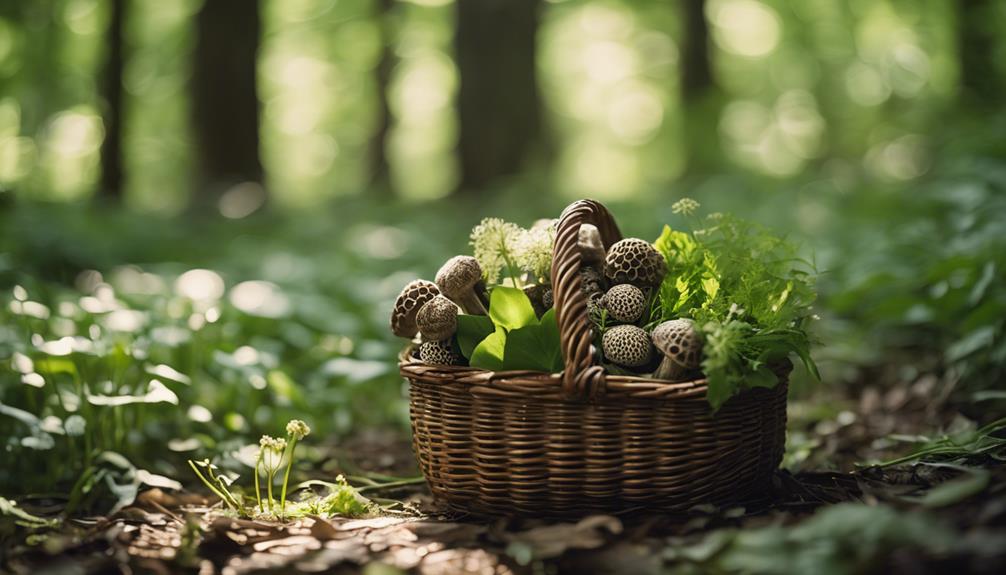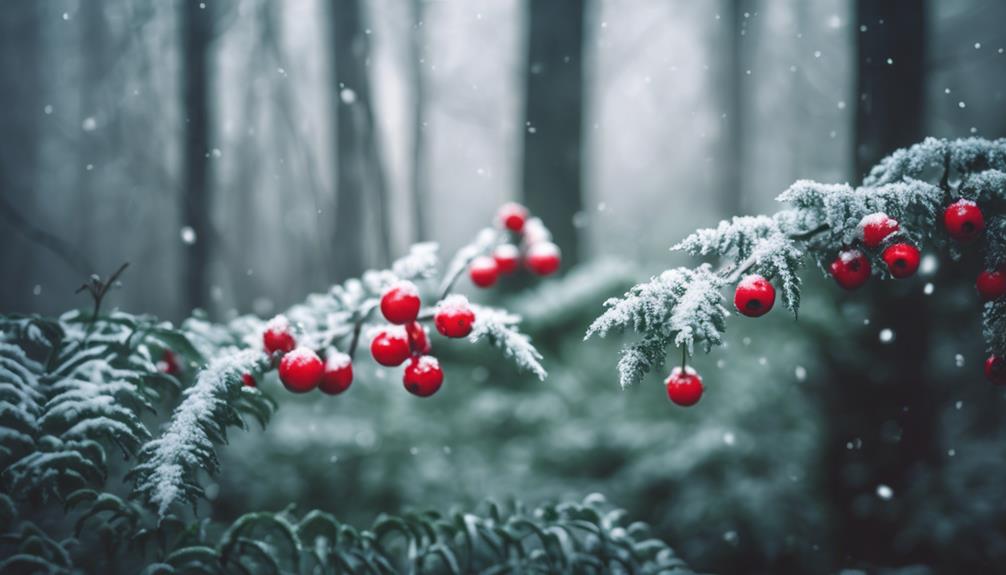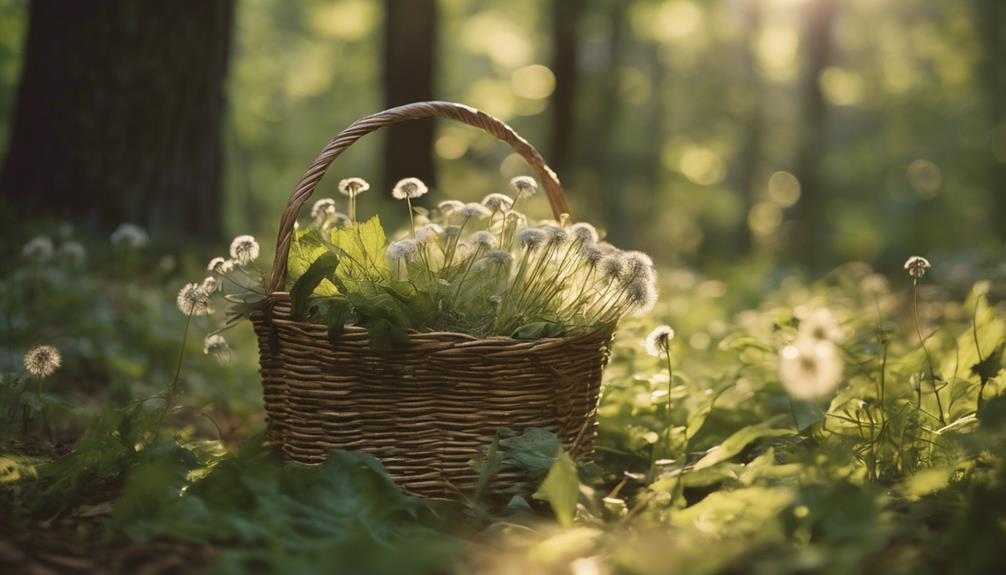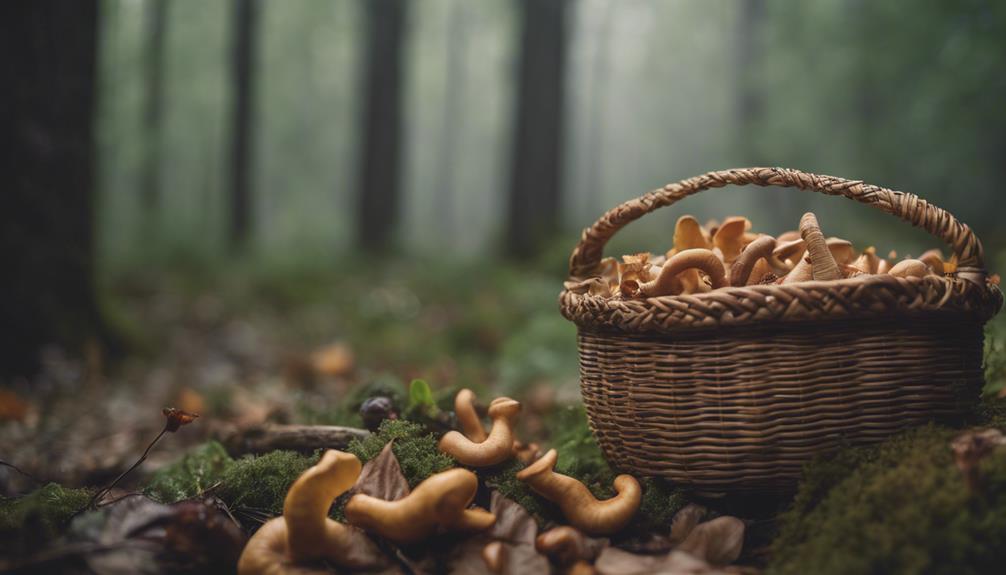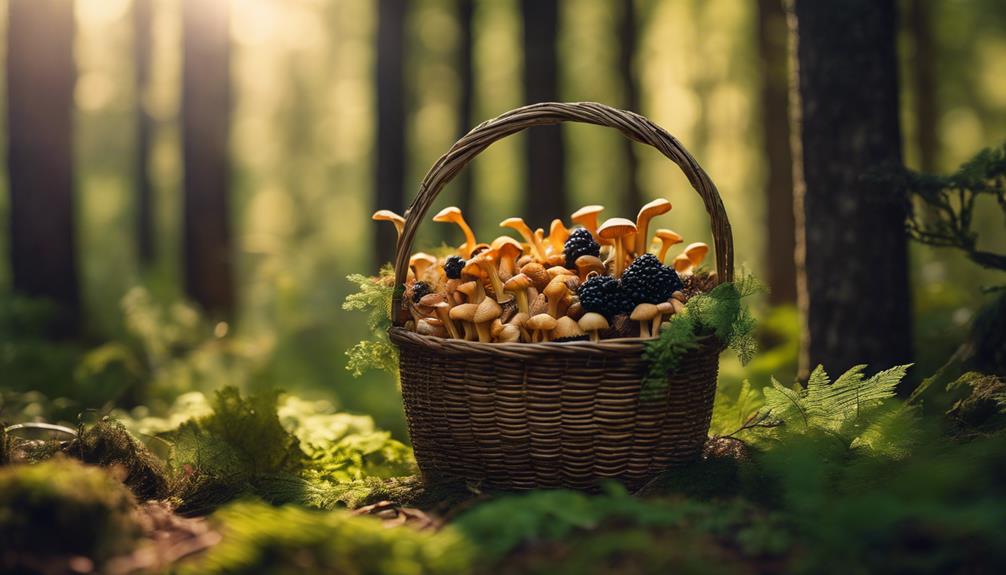As you explore Illinois' woodlands and prairies, you'll discover a pantry full of native edible plants like pawpaw, persimmon, black walnut, and pecan. These plants offer unique flavors and nutritional benefits, connecting you with the land's natural heritage. Identify them correctly, respecting wildlife habitats and ecosystems, and harvest sustainably to preserve biodiversity. Avoid common mistakes like misidentification and over-harvesting, and preserve your finds through canning, freezing, or dehydrating. By following these tips, you'll reveal the secrets of nature's free pantry and develop a deeper appreciation for Illinois' natural beauty and cultural heritage, and there's much more to uncover as you explore.
Key Takeaways
- Forage for Illinois' native edible plants like pawpaw, persimmon, black walnut, and pecan, offering unique flavors and nutritional benefits.
- Understand local regulations, environments, and ecosystems to ensure sustainable and responsible foraging practices.
- Develop essential skills like plant identification and safe harvesting practices to avoid common mistakes and promote ecosystem health.
- Harvest in moderation, rotate foraging spots, and obtain permission from landowners to maintain long-term sustainability and respect wildlife habitats.
- Properly store, preserve, and label foraged finds to enjoy nature's bounty year-round while minimizing waste and spoilage.
Illinois' Native Edible Plants
As you venture into Illinois' wilderness, you'll discover a treasure trove of native edible plants, including pawpaw, persimmon, black walnut, and pecan, each boasting unique flavors and nutritional benefits.
Foraging for these plants can be a rewarding experience, allowing you to connect with the land and its natural heritage. Illinois' native edible plants have been utilized by indigenous peoples and early settlers for centuries, serving as an essential source of food and medicine.
By preserving and utilizing these plants, you're contributing to the preservation of ecosystem health and biodiversity. The pawpaw, with its banana-like flavor, is a favorite among foragers, while the persimmon's sweet and tangy taste is a delightful treat.
The black walnut, rich in antioxidants, and the pecan, packed with protein, are also prized for their nutritional value. By embracing Illinois' native edible plants, you're not only expanding your palate but also supporting the local ecosystem.
Essential Foraging Skills and Rules

As you venture into the world of foraging in Illinois, it's important to develop essential skills and follow guidelines to guarantee a safe and sustainable harvest.
You'll need to know the land, identifying edible plants and understanding their habitats, as well as respecting the environment to preserve it for future foragers.
Know the Land
To successfully forage in Illinois, you must familiarize yourself with the local environment and its regulations, understanding what's allowed and what's not in the areas you plan to forage. This crucial step guarantees you're aware of any restrictions and can make ethical decisions while exploring nature's bounty.
Here are the key aspects to take into account when getting to know the land:
- Familiarize yourself with local regulations and rules governing foraging activities
- Understand the local environment, including habitats and ecosystems
- Develop essential skills, such as plant identification and safe harvesting practices
- Show respect for wildlife habitats and adopt sustainable foraging methods
- Be aware of any restrictions or limitations on foraging activities in specific areas
Identify Edible Plants
You'll need to develop a keen eye for detail to accurately identify edible plants, as misidentification can have serious consequences.
Properly identifying edible plants is vital in foraging, as it's important to avoid consuming toxic species. To do so, you'll need to develop essential foraging skills, including recognizing plant characteristics, growth patterns, and habitat preferences.
Following foraging rules helps guarantee safe and sustainable harvesting practices. As a beginner, focus on learning a few edible plants thoroughly before expanding your foraging repertoire.
Utilize field guides, apps, and expert resources to enhance your knowledge of edible plants in Illinois. By doing so, you'll be well on your way to safely and responsibly foraging for nature's bounty.
Respect the Environment
By adopting responsible foraging practices, you aren't only guaranteeing a sustainable harvest but also preserving the natural balance of the ecosystem.
As you venture into the world of foraging, it's crucial to respect the environment and leave no trace. This means always cleaning up after yourself and never overharvesting, allowing plants to propagate naturally.
Here are some key takeaways to keep in mind:
- Practice responsible harvesting to protect wildlife habitats and natural resources for future generations.
- Ensure accurate plant identification to avoid harming the ecosystem.
- Follow rules and guidelines for sustainable foraging to preserve the natural balance.
- Leave the environment undisturbed, taking care to leave no signs of your visit.
- Contribute to environmental conservation by adopting eco-friendly foraging practices.
Sustainable Harvesting Practices

As you venture into the world of foraging, it's crucial to prioritize sustainable harvesting practices.
You'll want to respect the landowner, harvest in moderation, and mind the ecosystem to secure the longevity of Illinois' native edible plants.
Respect the Landowner
Before heading out to forage on private property, obtain permission from the landowner to guarantee a mutually beneficial and sustainable harvesting experience. This respect for the landowner is essential in maintaining a positive relationship and preserving the foraging area.
To promote responsible foraging, remember to:
- Obtain permission from the landowner before foraging on private property
- Leave no trace by picking only what you need and not damaging the environment
- Follow specific guidelines set by the landowner to maintain a positive relationship
- Educate yourself on local regulations and etiquette to promote responsible foraging
- Minimize negative impacts on the land by being mindful of your actions
Harvest in Moderation
When foraging for wild edibles in Illinois, you must harvest in moderation to guarantee the long-term sustainability of the plants you're collecting. Over-harvesting can lead to the depletion of these valuable resources, making it essential to practice sustainable harvesting.
By taking only what you need and leaving enough for wildlife and future foragers, you're ensuring the plants can reproduce and thrive in their natural habitat.
Harvesting in moderation also helps maintain a balance between collecting wild edibles and preserving the ecosystem. You're not just collecting food; you're contributing to the long-term health and abundance of native plants in Illinois.
Mind the Ecosystem
By adopting sustainable harvesting practices, you're not only guaranteeing the long-term survival of Illinois' wild edibles, but also preserving the delicate balance of the ecosystem. As a responsible forager, it's crucial to be mindful of your ecosystem impact and make choices that promote biodiversity maintenance and wildlife preservation.
Here are some tips to keep in mind:
- Only take what you need to minimize ecosystem impact and avoid overharvesting
- Rotate foraging spots to allow plants to regenerate and maintain biodiversity
- Respect local regulations and guidelines to secure responsible foraging practices
- Consider the long-term effects of your harvesting on the ecosystem and make mindful choices
- Avoid over-reliance on a single species to maintain ecosystem mindfulness
Identifying Illinois' Wild Delicacies

Exploring Illinois' woodlands and prairies, keep an eye out for the sweet, banana-like flavor of pawpaw, the tangy taste of persimmon, and the rich, nutty flavor of black walnut and pecan. These wild delicacies are just waiting to be discovered, and foraging for them is a great way to connect with the natural heritage of Illinois.
Native edible plants like these provide unique flavors, nutrition, and a historical connection to the land. Preserving these native plants is crucial, not just for their culinary value, but also for the ecosystem health and biodiversity they support.
Indigenous peoples and early settlers in Illinois utilized these plants for food and medicinal purposes, and by foraging them, you're continuing that tradition. By identifying and appreciating these wild delicacies, you're contributing to the preservation of Illinois' natural beauty and cultural heritage.
Common Foraging Mistakes to Avoid

While you're enthusiastic to start foraging for Illinois' wild delicacies, it's equally important to know what not to do, so you can enjoy these edible treasures while safeguarding the environment.
Here are some common foraging mistakes to avoid:
- Misidentifying plants: Never consume a plant you're not 100% sure is safe. Misidentification can lead to dangerous consequences.
- Overharvesting: Practice sustainable foraging techniques to guarantee the ecosystem remains intact.
- Foraging in polluted areas: Avoid areas with high pesticide and pollutant levels to minimize health risks.
- Ignoring regulations: Always obtain permission before foraging to evade legal trouble.
- Disrespecting wildlife habitats: Harvest responsibly to protect local biodiversity and preserve the environment.
Preserving Your Foraged Finds

You'll want to preserve your foraged finds quickly to savor their flavors and textures throughout the year. Properly storing your fruits and vegetables in a cool, dark place will help maintain their freshness.
However, to enjoy your foraged goods year-round, consider preserving them through canning, freezing, or dehydrating. These methods will extend the shelf life of your finds, allowing you to relish them even in the off-season.
When preserving, use glass jars or airtight containers to prevent spoilage and keep your foraged goods fresh for longer. Be sure to label and date your preserved items, so you can keep track of their freshness and avoid waste.
Experiment with different preservation techniques to find what works best for you and your finds. By preserving your foraged finds, you'll be able to enjoy nature's bounty throughout the year, and not just during the foraging season.
Frequently Asked Questions
Can You Forage on Public Land in Illinois?
You can forage on public land in Illinois, but check the rules, as they vary by location. State Parks allow foraging, and you'll find a diverse range of edibles, but be aware of specific guidelines and respect the environment.
What Is the Rule of Thumb for Foraging?
"Better safe than sorry" is your motto when foraging – always properly identify plants before consuming to avoid harm, ensuring you know the characteristics of edible plants to distinguish them from toxic lookalikes.
What to Avoid When Foraging?
When foraging, you'll want to avoid polluted areas, roadsides, and industrial sites to prevent contamination. Steer clear of plants with poisonous look-alikes and sensitive ecosystems, and don't disturb wildlife habitats, ensuring a safe and sustainable foraging experience.
What Wild Plants Are Edible in Illinois?
You'll find pawpaw, persimmon, black walnut, and pecan are some of the sought-after edible plants in Illinois, offering unique flavors and nutrition, while connecting you to the land and natural heritage.
Conclusion
As you wander through Illinois' fields and forests, the scent of wild berries and earthy mushrooms fills the air, tantalizing your taste buds. You've discovered nature's free pantry, and the thrill of the hunt is addicting!
With every foraging trip, you're not only gathering ingredients for a delicious meal, but also connecting with the land and its ancient secrets.
Savor the flavors of the wild, and let the rhythms of nature guide your journey, as you uncover the hidden treasures of Illinois' edible landscape. From lush forests to rolling prairies, Illinois offers a bounty of seasonal ingredients waiting to be discovered. Whether it’s wild berries, fragrant herbs, or earthy mushrooms, every step further connects you to the land’s untamed richness. Similarly, foraging for wild edibles in South Dakota opens up another world of exploration, where rugged terrain hides a variety of nutritious native plants, offering a deeper appreciation for the natural abundance that surrounds us.

